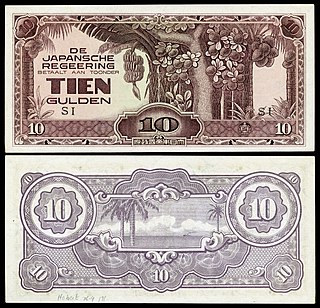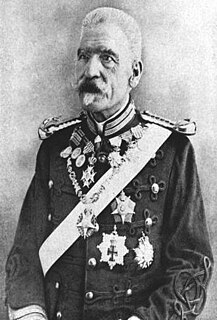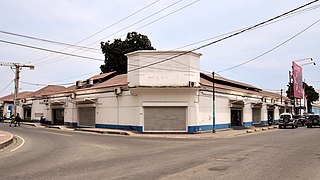
Portuguese Timor refers to East Timor during the historic period in which it was a Portuguese colony that lasted between 1702 and 1975. During most of this period, Portugal shared the island of Timor with the Dutch East Indies.

The Macau pataca or Macanese pataca is the currency of the Macau Special Administrative Region of the People's Republic of China. It is subdivided into 100 avos, with 10 avos called ho (毫) in Cantonese. The abbreviation MOP$ is commonly used.
Banco Nacional Ultramarino was a Portuguese bank with operations throughout the world, especially in Portugal's former overseas provinces. It ceased existence as an independent legal entity in Portugal following its merger in 2001 with Caixa Geral de Depósitos, the government-owned savings bank.

Liquiçá is one of the municipalities of East Timor. Its capital is also called Liquiçá.

Caixa Geral de Depósitos (CGD) is a Portuguese state-owned banking corporation, and the second largest bank in Portugal. CGD is Portugal's largest public sector banking corporation, established in Lisbon in 1876.

The National University of East Timor, is a public university in East Timor, the only one of its kind in the country.

The Netherlands Indies gulden, later the Netherlands Indies roepiah, was the currency issued by the Japanese occupiers in the Dutch East Indies between 1942 and 1945. It was subdivided into 100 sen and replaced the gulden at par.
Banco Internacional de São Tomé e Príncipe (BISTP) is the largest and oldest commercial bank in São Tomé and Príncipe. It consists of a head office and 14 branches. Its name translates to International Bank of São Tomé and Príncipe.
Banco Caixa Geral has its headquarters in Vigo, Spain, and is a subsidiary of Portugal's largest bank, the government-owned Caixa Geral de Depositos.
Mercantile Bank Limited is a South African commercial bank, founded in 1965. It was previously called Bank of Lisbon International. The bank is headquartered in Sandton, South Africa, and provides products and services in retail banking, corporate finance, asset management, equity brokerage and security.

The National Investment Bank is a Mozambican state owned development bank in association with the Mozambican Ministry of Finance. Its goal is to provide long-term financing for sustainable endeavours that contribute to the country's social and economic development. The bank's main areas of activities are Infrastructure, Natural Resources, Energy, Agriculture, Industry & Commerce and Transportation. BNI also seeks to strengthen the capital structure of private companies and the development of capital markets.

Some of this article is translated from the existing German Wikipedia article at de:Toko Lay; see its history for attribution.

Casa Europa is an historic late nineteenth-century Portuguese colonial building in the Bidau Lecidere suco of Dili, capital city of East Timor.

General José Celestino da Silva, was a Portuguese Army officer and colonial administrator. Between 1894 and 1908, he was governor of the colony of Portuguese Timor.

Sociedade Agrícola Pátria e Trabalho Lda. (SAPT) was an company with far-reaching agribusiness interests in the colony of Portuguese Timor, where its focus was on cultivating coffee for export.

The Liceu Dr. Francisco Machado is a neoclassical / Portuguese colonial former school building in the Colmera suco of Dili, capital city of East Timor. It is located one block west of the National Parliament of East Timor, and faces Rua de Moçambique. Today, it houses the Faculty of Education, Arts and Humanities of the National University of East Timor.
The 28 de Novembro Public Secondary School is a Timorese educational institution based in Becora, in Dili, the country's capital.

The old Municipal Market of Dili, now the Dili Convention Centre, is a renovated and repurposed historic Portuguese colonial-style former public market building in Dili, the capital city of East Timor.














